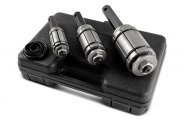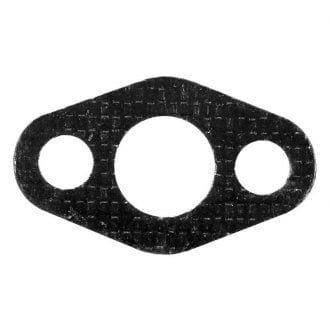TVR Accessories & Parts
TVR Parts
Universal Wheels & Tires
TVR Exterior Accessories
TVR Automotive Lighting
TVR Body Parts
TVR Interior Accessories
Universal Audio & Electronics
 Installation Parts
Installation Parts Stereos
Stereos Speakers
Speakers Amplifiers
Amplifiers Subwoofers
Subwoofers Cameras & Driver Safety
Cameras & Driver Safety Alarms & Remote Start
Alarms & Remote Start CB Radios & Components
CB Radios & Components Antennas & Components
Antennas & Components Mobile Phone Cables & Connectors
Mobile Phone Cables & Connectors Bluetooth
Bluetooth Equalizers & Processors
Equalizers & Processors Batteries & Power
Batteries & Power Video
Video Radar Detectors
Radar Detectors GPS Systems
GPS Systems Mounts & Chargers
Mounts & Chargers Action Cameras & Accessories
Action Cameras & Accessories
Universal Automotive Tools
 Oil Change Tools
Oil Change Tools Spark Plug & Ignition Tools
Spark Plug & Ignition Tools Wheel & Tire Service Tools
Wheel & Tire Service Tools Engine Service Tools
Engine Service Tools Brake Service Tools
Brake Service Tools Suspension & Steering Service Tools
Suspension & Steering Service Tools Fuel System Service
Fuel System Service Transmission & Drivetrain Service Tools
Transmission & Drivetrain Service Tools Pullers & Installers
Pullers & Installers Cooling System Service Tools
Cooling System Service Tools A/C Tools & Equipment
A/C Tools & Equipment Electrical System Tools
Electrical System Tools Diagnostic & Testing Tools
Diagnostic & Testing Tools Exhaust System Service Tools
Exhaust System Service Tools Auto Glass Tools
Auto Glass Tools Lockout Kits
Lockout Kits Jacks
Jacks Automotive Lifts & Stands
Automotive Lifts & Stands Repair Manuals
Repair Manuals Automotive Paint
Automotive Paint EV Charging
EV Charging Battery Chargers & Jump Starters
Battery Chargers & Jump Starters Dollies & Movers
Dollies & Movers Creepers
Creepers Auto Detailing
Auto Detailing Key Cutting Machines
Key Cutting Machines Dent Repair Tools
Dent Repair Tools Service Carts
Service Carts Vehicle & Parts Protection
Vehicle & Parts Protection
Any backyard tinkerer who, for lack of money, made something using “bitsa” this and “bitsa” that, had a kindred spirit in Trevor Wilkinson. The founder of TVR (the name was formed by dropping the other letters of his first name), Wilkinson built his first sports car in 1949 using an Alvis chassis, side-valve Ford engine, Morris wheels and rear axle, and even parts scrounged from amusement park bumper cars. But the completed car worked well, and became the first in a long line of hand-built, lightweight, powerful cars that would bear the TVR name. Although there were several ownership changes, ever present financial woes, and numerous different models between that first car and the last one built in 2006, each TVR was fast and fun to drive, and the machine to have if you didn’t want an ordinary sports car. The next generation of TVRs is slated to launch in 2017.
Trevor Wilkinson opened a garage, Trevcar Motors, just after World War II, where he repaired and sold cars, and did mechanical work on amusement park equipment. He took on a partner, Jack Pickard, and changed the name to TVR engineering in 1948. Their second car, of similar design, was already under construction when the first was destroyed in a crash. After selling that car, they began building car number three, this time using a more powerful OHV (Over Head Valve) Austin 4-cylinder engine. This car distinguished itself by earning several awards in local club races. These first cars were built with metal bodies, but by the early 1950s Wilkinson realized that it would be much less expensive to use fiberglass. A new chassis was designed to be used with the Austin engine set back as far as possible for near 50/50 weight distribution, and marketed as a kit with an RGS Atalanta fiberglass body. The resulting car was the TVR Sports Saloon (Sedan). Wilkinson drove one of these in competition events for several years to advertise the brand.
In 1955 a semi-spaceframe chassis was developed using Volkswagen trailing arm suspension, thus becoming the first TVR with 4-wheel independent suspension. The first car of note with this chassis was sold to American racing driver Ray Saidel, fitted with a Coventry Climax engine and an aluminum body, and dubbed “Jomar” (a name created by the owner derived from the names of his children, Joanna and Marc). In the late 1950s TVR fitted this chassis with the first body styles of their own design, the Open Sports and the Coupe, and these were sold to customers with a choice of Coventry Climax, MGA, or Ford side-valve engines. By this time many TVRs were being exported to the U.S., where they were marketed by Saidel as Jomars and used extensively in racing. However, Saidel felt that he could sell more cars if the styling was improved and this led to the creation of the fastback-style Grantura. Used with the same semi-spaceframe chassis, the Grantura, which was sold as the Jomar Coupe in the U.S., was available with several different powerplants including Ford side-valve or OHV, Coventry Climax, or MGA, 4-cylinder engines.
Shortly after the introduction of the Grantura, TVR began experiencing financial problems that would afflict the company for the next several years. The company dissolved and reformed several times and under different names, experienced leadership and distributor changes, and even founder Trevor Wilkinson resigned in 1962. However, new hope for TVR came in 1963, when a Long Island Ford dealer named Jack Griffith installed a Ford 289 V8 in a Grantura Mk3 chassis. While phenomenally fast, the brakes and chassis were not up to the power, which led to the factory’s creation of the more capable TVR Griffith 200. An assembly line was set up in the U.S, whereby engines would be installed in engine-less cars shipped from the TVR factory, and an even further refined Griffith 400 series was developed. However, the Griffith was plagued with build quality and reliability problems, and more financial issues resulted in Ford halting the supply of engines. TVR again went into liquidation in 1964.
In 1965, the assets of TVR were purchased by Arthur Lilley and his son Martin, who had been shareholders in the company. The Lilleys focused on improving quality, and under their leadership production of the Grantura and Griffith was ended, replaced by first the Tuscan and then the Vixen. Aesthetically, the Tuscan and Vixen were evolutions of the Grantura design. During its 1967-1971 production run the Tuscan was powered by Ford V6 and V8 engines, and through its 1968-72 run the Vixen was powered by Ford OHV 4-cylinder engines and Triumph 4-cylinder and in-line 6-cylinder engines. The M series cars that debuted in 1972 maintained the same styling theme but had an all new chassis designed by chassis tuner Mike Bigland. The new chassis was more rigid, which improved handling and increased safety, and was also more economical to produce. The 1600M, 2500M, 3000M and 3000M Turbo, 3000S and 3000S Turbo, and coupe and convertible bodied Taimar and Taimar Turbo, were produced during various year spans until 1980, and were powered by several different engines including Ford OHV 4-cylinders, Triumph in-line 6-cylinders, and naturally aspirated and turbocharged Ford V6 engines.
By the late 70s it was obvious that a car with all new styling was needed, and furthermore one that could meet increasingly stringent safety and emissions standards. The wedge-shaped Tasmin, available in coupe and convertible and with 4-cylinder or V6 power, was the final new design with the company under control of the Lilleys. Once again in financial peril, the company was purchased by businessman Peter Wheeler in 1981. The first models built under Wheeler’s ownership, the 350i, 350SE, 390SE, 400SE, 420SE, 450SE, 420SEAC, and 450 SEAC, were variants of the Tasmin design, but with Rover V8 power, ranging from 3.5L to 4.5L. 350SX and 450SX models were supercharged. The first new design of the Wheeler era was the S series, which debuted to enthusiastic response at the 1986 British International Motor Show. Produced from 1986 to 1994, the S, S2, S3C, and SC4 were powered by Ford V6 engines, with Rover 4L V8 power for the V8S. The successors to the S series were the Chimaera and Griffith, produced until 2001 and 2002 respectively. Although based on the same chassis, the Griffith was more of a serious sports car while the Chimaera was intended for long distance touring. Both were the last TVRs to use the Rover V8.
The Cerbera, in production from 1996 to 2003, was the third new design under Wheeler. It was also the first hard top, the first 2+2 (four seats), and the very first TVR to have an in-house manufactured engine. Fearing that he would lose access to Rover V8 engines after BMW’s purchase of Rover, Wheeler contracted with racing engineer Al Melling to design a V8 engine. The resulting naturally aspirated 4.2L engine, dubbed the “speed eight”, had a flat plane crank, 75 degree cylinder bank angle, SOHC (Single Over Head Cams), and 2 valves per cylinder. Its 360 horsepower propelled the Cerbera to a top speed of 185 mph. A larger 4.5L version of the engine made 420 horsepower. Subsequent TVR sports coupes and convertibles including the Tamora, T350, Tuscan, Sagaris, and Typhon were powered by a DOHC (Double Over Head Cam) 24-valve inline 6-cylinder engine called the “speed six”.
In 2004 TVR was sold to Nikolay Smolensky. At first it seemed that the new owner would continue with the pace of product development and quality control established by Wheeler, but sales declined abruptly in 2006 and production ended, thus beginning several years of rumor and intrigue that had the company moving, splitting into different companies, and being sold and resold, with Smolensky losing and regaining control. In 2013 Smolensky sold the company to British entrepreneur Les Edgar, who made his money developing computer games. The new TVR coupes and convertibles that are scheduled to go on sale in 2017 are being developed in collaboration with noted race car designer Gordon Murray and renowned high-performance engineering company Cosworth.
Although TVRs are exclusive sports cars, like most small, limited production manufacturers, the company outsourced much of their components. A TVR is the sum of a unique combination of those parts that with skillful design and engineering becomes a world class performance car. The benefit to you the enthusiast is that many of those parts are common to other ordinary vehicles, so they’re plentiful in the aftermarket, which means you’re sure to find many of the maintenance supplies, repair parts and accessories you need for your TVR right here on our digital shelves.
Dress your vehicle up. Keep it running at its peak or unleash its hidden power. Make it look like it just rolled off the show room floor. Take care of it and maintain it. You name it, we've got it. We have gathered everything you need to make your TVR perfect both inside and out. CARiD's job is to meet your every expectation and provide you with quality and durable accessories and parts designed with excellence in mind. Whether you're after luxurious style, brisk performance, or anything in between, our wide assortment covers all the bases.
Popular Products
-
 $25.95 - $83.95
$25.95 - $83.95 -
 $1.16 - $27.04
$1.16 - $27.04 -














